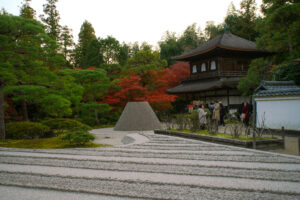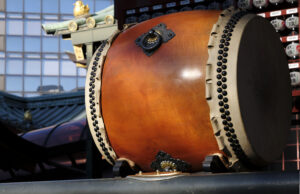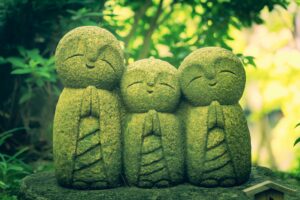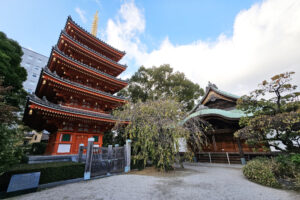In the heart of Japan, an ancient craft whispers the story of time, culture, and nature intertwined through the slender, resilient stalks of bamboo. Japanese bamboo crafting, an art form revered for its intricate designs and deep-rooted traditions, continues to captivate and inspire. This tradition, which spans centuries, is more than just the creation of aesthetically pleasing objects; it is a testament to the skill, dedication, and philosophical depth that defines the Japanese way of life. As we delve into the world of bamboo crafting, we uncover the tools, techniques, and masters who preserve this art, as well as the innovations and global appreciation that propel it into the future.
Embracing the Past: Japanese Bamboo Crafting
Japanese bamboo crafting is a tradition that dates back over a thousand years, with its origins deeply entwined in the everyday life and spiritual practices of ancient Japan. This craft was not only about creating utilitarian items but also about expressing beauty, a connection to nature, and a deeper philosophical understanding of life. The bamboo, with its strong yet flexible nature, became a symbol of resilience, purity, and integrity in Japanese culture. The evolution of bamboo crafting from its humble beginnings to its current status as a recognized art form demonstrates the Japanese commitment to preserving and honoring their heritage while allowing for artistic expression within the bounds of tradition.
Tools of the Trade: The Bamboo Craftsman’s Kit
A bamboo craftsman’s kit is as unique as the pieces they create, containing an array of specialized tools designed for precision and delicacy. Among these tools are the takéhiki (bamboo knife), used for splitting bamboo into fine strips; the shinogi, a tool for shaving and smoothing bamboo surfaces; and various forms of higaki, which are used for intricate weaving and plaiting. These tools, often handmade and passed down through generations, are extensions of the craftsman’s hands, allowing them to transform raw bamboo into works of art.
From Shoot to Art: The Bamboo Transformation
The transformation of bamboo from a green shoot in the forest to a piece of art is a process steeped in tradition and meticulous craftsmanship. The journey begins with the selection of the bamboo, a task that requires deep knowledge of bamboo species and their particular characteristics. Seasonal timing is crucial; bamboo is typically harvested in the winter when the sap is low to prevent insect infestation. Once harvested, the bamboo is carefully cured and dried, a process that can take up to several years, depending on the intended use. Only then can the craftsman begin the painstaking work of splitting, shaping, and weaving the bamboo into the final art piece.
Master Craftsmen: Guardians of Tradition
Master craftsmen, known as takumi, are revered figures in the world of Japanese bamboo crafting. These individuals have dedicated their lives to their art, often stemming from a lineage of bamboo craftsmen, and are considered guardians of tradition. They not only produce extraordinary works of art but also play a crucial role in passing down techniques and knowledge to the next generation. The designation of some master craftsmen as "Living National Treasures" by the Japanese government underscores the cultural importance of this craft and the respect afforded to those who excel in it.
Techniques Refined Through Centuries
The techniques used in Japanese bamboo crafting have been refined over centuries, evolving into a sophisticated art form that demands precision, patience, and creativity. These techniques range from basic plaiting and weaving to more complex methods such as hotategumi, which involves hexagonal plaiting, and yotsume-ami, a four-eye weaving technique. Each technique imparts a different texture, pattern, and strength to the final piece, allowing for a vast expression of creativity within the structural confines of the craft.
The Zen of Bamboo: Philosophy in Crafting
The art of bamboo crafting is deeply imbued with Zen philosophy, emphasizing simplicity, natural beauty, and a harmonious balance between form and function. Craftsmen approach their work with a mindset of mindfulness and respect for the material, seeing the act of crafting as a meditative practice. This philosophical approach fosters a deep connection between the craftsman and their work, imbuing each piece with a sense of soul and life that transcends its physical form.
Enduring Art: The Resilience of Bamboo Works
Bamboo works are celebrated not only for their aesthetic beauty but also for their resilience and durability. The natural properties of bamboo, combined with the meticulous crafting techniques, result in works that can last for generations, often becoming more valued over time. This enduring quality reflects the sustainability and environmental harmony inherent in bamboo crafting, making each piece a lasting tribute to the art form and its philosophy.
Innovations within Tradition: Bamboo’s New Wave
While deeply rooted in tradition, the world of Japanese bamboo crafting is also experiencing a wave of innovation as artists explore new forms, functions, and expressions within the craft. Contemporary bamboo artists are pushing the boundaries, incorporating modern design elements and experimenting with new techniques while maintaining the essence of traditional craftsmanship. These innovations ensure the art form remains relevant and continues to evolve, engaging new audiences and inspiring future generations of craftsmen.
Sacred Spaces: Bamboo in Japanese Culture
In Japanese culture, bamboo is more than just a material for crafting; it holds a sacred place in the spiritual and aesthetic landscape of the country. Bamboo groves are often found near temples and shrines, creating spaces of tranquility and reflection. Additionally, bamboo plays a central role in traditional Japanese tea ceremonies and ikebana (flower arranging), further embedding it in the cultural fabric. This deep connection underscores the cultural significance of bamboo and its crafting, elevating it beyond mere artisanship to a vital element of Japanese identity.
Crafting Beyond Borders: Global Bamboo Art
The allure of Japanese bamboo crafting has crossed borders, captivating audiences and artists worldwide. International exhibitions, collaborations, and workshops have introduced the art form to a global audience, fostering an appreciation for its aesthetic beauty and cultural depth. As more artists outside Japan adopt bamboo crafting techniques, they contribute to a cross-cultural exchange that enriches the tradition, bringing new perspectives and innovations to the craft.
Sustainability in Craft: Bamboo’s Eco Advantage
Bamboo crafting stands at the intersection of art and sustainability, offering an eco-friendly alternative to wood and other materials. Bamboo’s rapid growth rate, ability to regenerate without replanting, and carbon sequestration capabilities make it an environmentally responsible choice for artisans. This aspect of bamboo crafting resonates with contemporary concerns about sustainability and environmental conservation, highlighting the craft’s relevance in today’s eco-conscious world.
The Future of Bamboo Crafting: Preserving Tradition
As we look to the future of Japanese bamboo crafting, the challenge and opportunity lie in balancing preservation with innovation. Ensuring the transmission of traditional techniques to new generations of craftsmen is essential for keeping the craft alive. At the same time, embracing new technologies, materials, and artistic expressions can enhance the craft’s appeal and sustainability. By honoring its past while looking forward, bamboo crafting can continue to thrive, reflecting the enduring spirit and evolving identity of Japanese culture.
The art of Japanese bamboo crafting stands as a poignant symbol of resilience, beauty, and the delicate balance between man, nature, and tradition. As this ancient craft navigates the challenges of the modern world, its enduring appeal and sustainability point to a rich, adaptive future. The story of bamboo in Japan is indeed a testament to the power of art to connect us to our past, engage with the present, and inspire the future. In the slender stalks of bamboo, we find strength, versatility, and a path forward that honors the earth and its traditions.








